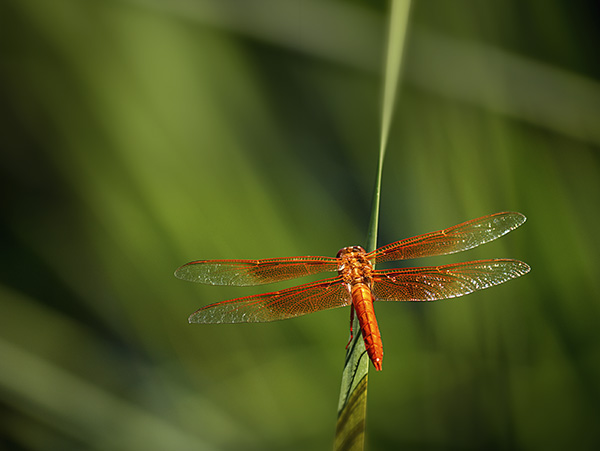
by successfulbob | bird photography, Lumix GX85, Lumix Lounge, photography, photography gear, wildlife photography
Lumix GX85 Camera
I have only had this camera in my hands for a couple of days, and I’m liking it! The Lumix GX85 was built on the same chassis as the GX7. It’s a body that is small but very comfortable, in my opinion, to handhold. I remember when I took the GX7 out for a test spin about three years ago and didn’t like the feel of the grip when first using it. But as part of the Luminary Team, I was given the assignment to take the camera cross country and make images and send them out for two days. First half day I was uncomfortable with the camera’s feel. By the end of the first day, it was, “I kinda like this camera.” By the end of the second day, I was pleased and comfortable with the feel of the camera.
The other bonus was/is that this camera is very low profile. Combined with the smaller lenses of the micro 4/3rds system I found almost no one who said no to the request of making their picture. A decided difference from the equivalent full frame DSLR gear.
Fast forward to yesterday and photographing some wildlife. I was out scouting a wetlands area just south of Sedona. (who knew, right?) It was the middle of the day, and I wasn’t planning on making any images but just in case I set up the GX85 with the 100-300mm. The camera stabilization is fabulous, and the pictures I took are tack sharp. When photographing wildlife, I like precise detail and was excited by the results from handheld photos. It can be tough using a tripod when chasing flying critters around the marshes. This little guy is called the Flame Skimmer or Firecracker Skimmer for obvious reasons. I found chasing dragonflies is a lot like photographing birds in that you need to study behavior patterns to obtain well composed interesting images.
This little guy is called the Flame Skimmer or Firecracker Skimmer for obvious reasons. I found chasing dragonflies is a lot like photographing birds in that you need to study behavior patterns to obtain well composed interesting images.
 Here’s a detail of the dragonfly. A little bit of sharpening was added in post using MacPhun’s Creative Kit Focus
Here’s a detail of the dragonfly. A little bit of sharpening was added in post using MacPhun’s Creative Kit Focus
 Here’s the under-carriage of another dragonfly. Amazing little critters!
Here’s the under-carriage of another dragonfly. Amazing little critters!
 I moved to a different area with more water at a place called Bubbling Springs over in Page Springs and found this huge family of Mallards out for an afternoon swim.
I moved to a different area with more water at a place called Bubbling Springs over in Page Springs and found this huge family of Mallards out for an afternoon swim.
 Mallard duck detail.
Mallard duck detail.
Images were captured with the Lumix 100-300mm Vario f 4.0-6.3 lens. That’s a whole lotta reach for about $550 – Especially when you consider it’s the full frame equivalent of 200-600mm.
Yours in Creative Photography, Bob
PS – Can’t wait to try out the new Lumix G Leica DG Vario-Elmar 100-400mm Lens with this camera.
PPS – Please remember that using links to make your Amazon purchases helps to support this website. Cheers!
Save
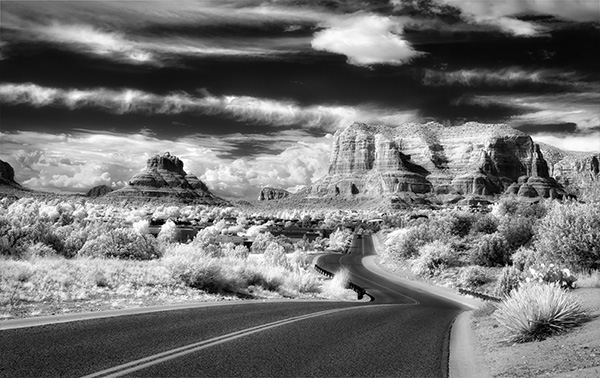
by successfulbob | infrared photography, landscape photography, Lumix G6, Lumix Lounge
Infrared Photo – Sedona
Monsoon weather.
Clouds of all shapes and sizes dance and glide through the area on a regular basis.
Normally, mid-day is not the best time to be out photographing in full sun. With my Lumix G6 camera converted to infrared the middle of the day becomes a playground of absolutely beautiful high contrast. I love this look and the possibilities it brings.
 Infrared black & white image Village of Oak Creek, Sedona, Arizona
Infrared black & white image Village of Oak Creek, Sedona, Arizona
The camera was converted to infrared by LifePixel. It took a slightly older camera and gave me a new look for images in my photography life. The way I capture is in RAW plus jpeg and bracketing by three stops. For this image, I processed the three jpegs and layered them together using the information from each using Masks in Photoshop. I took the layer showing the highlights and moved it into NIK Color FX Pro 4* and added a Glamour Glow Filter to get the “IR Glow.”
Yours in Creative Photography, Bob
* You can download the entire series of NIK filters at no charge. Go get ‘um. There probably won’t be any updates but they are an incredible set of tools for use right now.
PS – I expanded upon this blog with more information on ‘Working a Scene-Multiple Compositions’ on the LifePixel site.
Save
Save
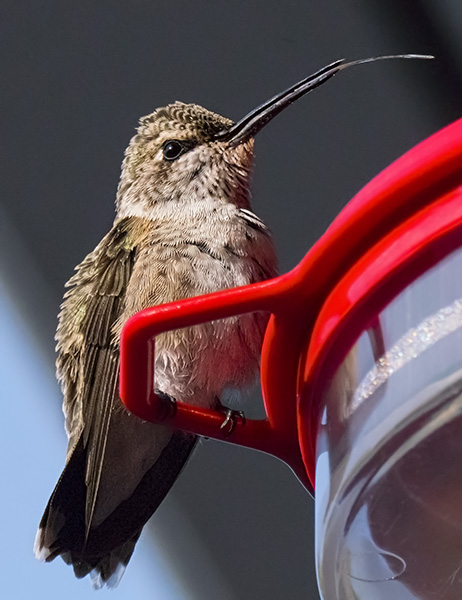
by successfulbob | bird photography, Lumix GX8, Lumix Lounge, photography, photography education, wildlife photography
Hummingbird Photo – Lumix GX8
Hanging out this morning and thought I’d do some camera testing with my Lumix GX8 and the 100-300mm G Vario f4-5.6 (200-600mm equivalent) lens. I made these images handheld with stabilization turned on. Settings for these were f14 1/2000th sec at ISO 6400. I’ll share some hummingbirds in motion images at different settings a little later. I became enamored of this little critter because he had so much peppy personality. Looks like he just arrived from a long migration. He’s not one of our local birds and seems a little worse for wear.
 Hummingbird Straight out of the camera. He’s checking me out.
Hummingbird Straight out of the camera. He’s checking me out.
 After seeing me, he stuck out his tongue! Not sure if that was social commentary or not. Here’s the little guy after processing with MacPhun Noiseless and MacPhun Tonality (for sharpening the feathers just a bit more. Explanation below)
After seeing me, he stuck out his tongue! Not sure if that was social commentary or not. Here’s the little guy after processing with MacPhun Noiseless and MacPhun Tonality (for sharpening the feathers just a bit more. Explanation below)
So these images turned into a processing exercise. Some photographers mention that they are concerned with noise in images from smaller chip cameras like the micro 4/3rds. Personally, I feel that we get a little too hung up on that as the newer algorithms that are used in processing give a very natural feel to the noise that replicates the grain structure we had back in film days. (can you hear my creaky bones as I talk???)
To see if there was an elegant solution for those who have a concern when you push the camera to higher ISO’s thought I’d see how software might be of help. Oh man, it does if you are on a MAC. I’m using MacPhun Noiseless, and it worked a charm. MacPhun is only for MAC OS systems. I’m sure there are similar products for those on PCs. One of the problems I had in the past with noise reduction programs is the removal of detail that I wanted/needed in some parts of the image. I’ll let you decide, but I don’t think that’s a problem anymore!
On to the processing!
 Original detail capture SOOC.
Original detail capture SOOC.
 Here’s the image after running MacPhun’s Noiseless software. There are lots of settings and possibilities. This was a fairly aggressive treatment. It smoothed out the noise in the background nicely without losing detail in the feathers.
Here’s the image after running MacPhun’s Noiseless software. There are lots of settings and possibilities. This was a fairly aggressive treatment. It smoothed out the noise in the background nicely without losing detail in the feathers.
 This is the final. I used the Tonality software from MacPhun to sharpen the feathers a bit more. “Wait a minute Bob! isn’t tonality made for making an image black and white?” You bet. But, I liked the controls that allowed me to sharpen small details and micro control the contrast in different areas of the image. The secret is to do this on a separate layer and change the Layer Mode to Luminosity in Photoshop. Then only the information that is Luminous is applied to the image. Using a Layer Mask, I applied the sharpening to only the feathers.
This is the final. I used the Tonality software from MacPhun to sharpen the feathers a bit more. “Wait a minute Bob! isn’t tonality made for making an image black and white?” You bet. But, I liked the controls that allowed me to sharpen small details and micro control the contrast in different areas of the image. The secret is to do this on a separate layer and change the Layer Mode to Luminosity in Photoshop. Then only the information that is Luminous is applied to the image. Using a Layer Mask, I applied the sharpening to only the feathers.
 Here is the Tonality layer without a mask. You can see where it sharpened the background as well hence the use of the Mask in Photoshop in addition to changing to the Luminosity Mode.
Here is the Tonality layer without a mask. You can see where it sharpened the background as well hence the use of the Mask in Photoshop in addition to changing to the Luminosity Mode.
 Here’s the Layers Palette. Background Layer is original capture. Layer 1 is with noise removal. Top Layer is Tonality with a mask.
Here’s the Layers Palette. Background Layer is original capture. Layer 1 is with noise removal. Top Layer is Tonality with a mask.
Yours in Creative Photography, Bob
Save
Save
Save
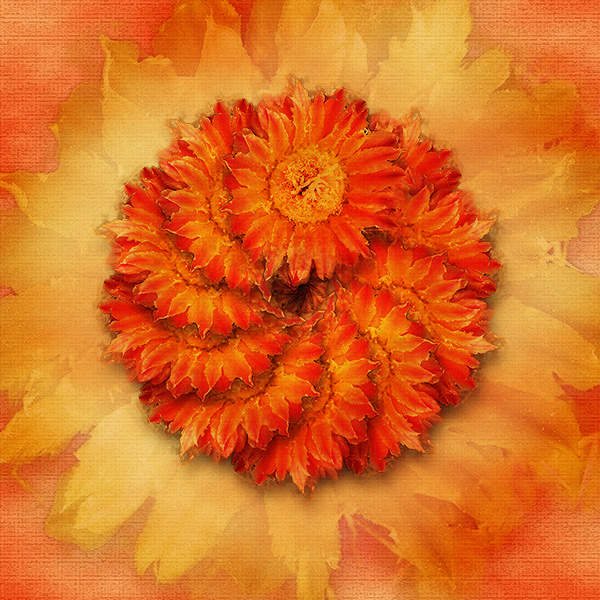
by successfulbob | Lumix Lounge, Lumix LX100, photography, photography creativity, photography gear, photography lighting resources
Using a Mini-Scrim for Better Photos
A very simple way to control light is through the use of a scrim. For small subjects and objects, a regular 42-inch round scrim or super size scrims of 60 inches or more can be a bit of overkill for just mucking about. Westcott makes a wonderfully portable sized, five-in-one that is only twenty inches and when folded in it’s carrying case is a tiny eight inches for about twenty bucks.
Here’s a quick example using a neighbor’s cactus that was showing some attractive color blossoms. Look carefully at the difference between photos and I think you’ll see that learning to use a scrim can help get you better lighting in your images.
 This first image was captured with full sun as the light source. Colors are bright and you might think that this works. Look at the harsh, deep dark patches in the shadow with no detail. This is the same kind of look you will get if you use on-camera flash.
This first image was captured with full sun as the light source. Colors are bright and you might think that this works. Look at the harsh, deep dark patches in the shadow with no detail. This is the same kind of look you will get if you use on-camera flash.
 In order to tame the harsh shadows, I next captured the blooms in full shadow. This results in slightly less contrast and the color has become muted. I suppose the color could be pumped up in post-production but the shadow are still a bit blocked up.
In order to tame the harsh shadows, I next captured the blooms in full shadow. This results in slightly less contrast and the color has become muted. I suppose the color could be pumped up in post-production but the shadow are still a bit blocked up.
 Here a scrim was placed between the sun and subject. Even though the scrim is only twenty inches because of it’s close proximity to the flowers it is acting like a very large light source. Very nice overall light with soft shadows and color fidelity. All images were processed with the same settings straight out of the camera. (SOOC)
Here a scrim was placed between the sun and subject. Even though the scrim is only twenty inches because of it’s close proximity to the flowers it is acting like a very large light source. Very nice overall light with soft shadows and color fidelity. All images were processed with the same settings straight out of the camera. (SOOC)
 A quick grab of the scrim in action. In addition, the kit comes with four other surfaces to reflect or block light in various intensities and colors. Black, gold, silver and white can all also be used to bend light to your will.
A quick grab of the scrim in action. In addition, the kit comes with four other surfaces to reflect or block light in various intensities and colors. Black, gold, silver and white can all also be used to bend light to your will.
You can take this same lesson and apply it to larger subject such as people by using a larger scrim. Practice with it and you will find the larger the scrim and the distance it is to your subject you will be able to control the shadow edge transitions and depth of the shadow on your subject. Moving it further away while still covering your subject will give you slightly stronger shadows. Conversely, the scrim closer will make the light softer.
 Sometimes you just gotta play! NIK filters, Photoshop extraction’ Layers and the Transform Tool.
Sometimes you just gotta play! NIK filters, Photoshop extraction’ Layers and the Transform Tool.
These photos were captured with the Lumix LX100 the camera I call the ‘Pro’s Point & Shoot.’ A solid little performer built on a magnesium frame for about $700.
Yours in Creative Photography, Bob
Save
Save
Save
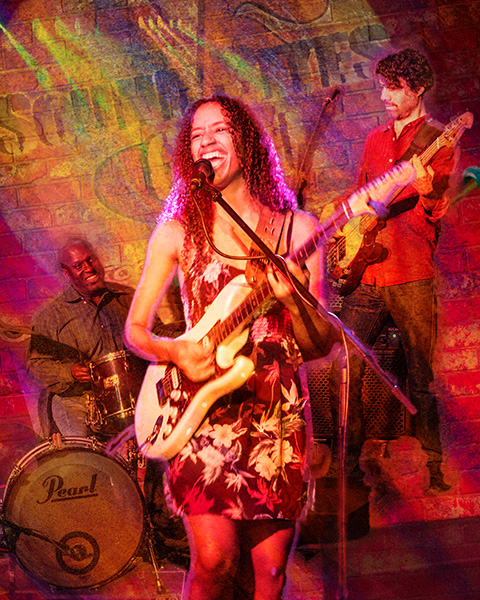
by successfulbob | fine art musician portrait, graphic design, Lumix GH4, Lumix GX8, Lumix Lounge, musician photography, people photography, photographer of musicians
Jackie Venson at Sound Bites Grill
Sound Bites Grill has a new addition to the ‘Wall of Fame.’
Jackie Venson and her band were enshrined at the SBG Wall last night.
 Here are Jackie Venson and her band in art form.
Here are Jackie Venson and her band in art form.
 Here’s how it looks on the Wall. The autographs are done in advance on a white piece of paper with black Sharpie pen. I’ll show you all the elements used to create the final image below.
Here’s how it looks on the Wall. The autographs are done in advance on a white piece of paper with black Sharpie pen. I’ll show you all the elements used to create the final image below.
The ‘Wall of Fame’ image is created with photos captured during the live stage performance in the Sound Bites Show Lounge. Each performer is tracked on stage individually. Then they are extracted from the background and placed into a new environment. Texture, shadows, glows along with sharpening, blurring parts of the combined images are all combined in Adobe Photoshop to create the final art piece. Capturing the musicians during the live performance gives the final art image a stronger feeling of emotion created during the performance that a static image just doesn’t have.
 Here are the elements for the final image. Layers and Masks along with Blend Modes were utilized in creating the painterly look.
Here are the elements for the final image. Layers and Masks along with Blend Modes were utilized in creating the painterly look.
Images are currently being captured with the Lumix GH4 or Lumix GX8 cameras. I enjoy that the sensors have enough density range to allow a single capture of the harsh LED lighted scene. A slight adjustment in post production using Adobe Camera Raw (ACR) of bringing down the highlights and opening up the shadows makes for a well-exposed photo. In previous cameras due to the extreme light variations, there was a need to capture three images and blend them together to achieve the same result.
Yours in Creative Photography, Bob
PS – Can’t wait until Jackie, Alán Uribe on bass/backvox and Rodney Hyder on drums come back for their next show at Sound Bites Grill

 This little guy is called the Flame Skimmer or Firecracker Skimmer for obvious reasons. I found chasing dragonflies is a lot like photographing birds in that you need to study behavior patterns to obtain well composed interesting images.
This little guy is called the Flame Skimmer or Firecracker Skimmer for obvious reasons. I found chasing dragonflies is a lot like photographing birds in that you need to study behavior patterns to obtain well composed interesting images. Here’s a detail of the dragonfly. A little bit of sharpening was added in post using MacPhun’s Creative Kit Focus
Here’s a detail of the dragonfly. A little bit of sharpening was added in post using MacPhun’s Creative Kit Focus Here’s the under-carriage of another dragonfly. Amazing little critters!
Here’s the under-carriage of another dragonfly. Amazing little critters! I moved to a different area with more water at a place called Bubbling Springs over in Page Springs and found this huge family of Mallards out for an afternoon swim.
I moved to a different area with more water at a place called Bubbling Springs over in Page Springs and found this huge family of Mallards out for an afternoon swim.

























